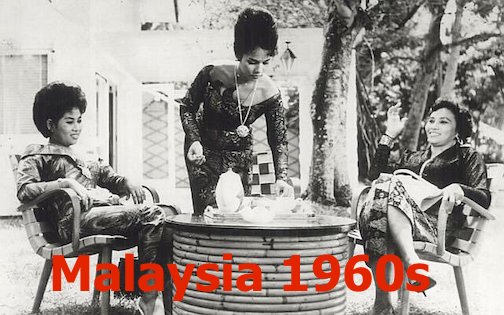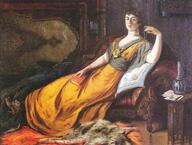Photos below show the last official and accepted caliph, Abdulmecid II (older, bearded man), his wife, and members of his family. Note that the caliph's wife and female family members were not wearing the headscarf, neither were their arms or necks covered.
The headscarf was not worn because the headscarf is not an Islamic requirement. Over time, the headscarf has become a way of enforcing Islam.
The headscarf was not worn because the headscarf is not an Islamic requirement. Over time, the headscarf has become a way of enforcing Islam.
When the Allied forces were partitioning parts of the Ottoman Islamic Empire after WWI, the Turkish War for Independence was launched and on July 24, 1923, Turkey was recognized as a sovereign republic. Mustafa Atatürk, a military leader who fought for Turkish independence, founded the Republic of Turkey and became Turkey's first president.
Atatürk abolished the Muslim Caliphate in 1924 and also abolished Islamic Law in Turkey. The abolishment of the caliphate had repercussions for all of Islam because no caliph was appointed anywhere in the world after the dissolution of the Ottoman Caliphate.
The Ottoman Caliphate had held control of Mecca and Medina. Saudi Arabia had not yet become the Kingdom of Saudi Arabia. The Arabian Peninsula consisted primarily of illiterate bedouin tribes, the largest populations of which existed in the northeast where there were reliable water sources.
The most powerful tribe, the Saudi tribe, originated in the northeastern region of Arabia, a region called the nejd.
Mecca and Medina lie in the hijaz region of western Arabia.
When the caliphate was dissolved, Hussein of Trans-Jordan tried to seize the moment and went to Mecca to declare himself caliph. In response, the Saudi tribe mobilized units of ikhwan (brotherhood, as in Muslim Brotherhood).
Units of ikhwan were sent to Trans-Jordan where they massacred a village. Other ikhwan units were sent to Taif, about 50 miles from Mecca, where they committed another massacre. This caused great panic and Hussein of Trans-Jordan lost control and left Mecca.
Ibn Saud, leader of the Saudi tribe, then entered Mecca with an army of ikhwan and declared himself King of the Hijaz in 1926.
The Saudis did not establish a caliphate. They used a system based on ikhwan (Muslim Brotherhood), that acted as an army of militant police, and mutawwas (proselyters), to spread the Wahhabi system of Islam.
This system was named after Muhammad abd al-Wahhab. Wahhab had been the spiritual leader of the Saudi tribe. Wahhabism is a system of control accomplished by forcing the youth to learn the Quran at a very early age and to emulate the behavior of Muhammad.
Units of mutawwas (proselyters) went out to the various bedouin tribes of Arabia and spread this system. The ikhwan were then used as a police sector to enforce Islam on the rest of the population (see also: The Saudi System).
The emergence of forced implementation of headscarf (and the veil) in other countries did not begin until this same Wahhabi system of ikhwan and mutawwas began infiltrating other countries.
After Erdogan became Prime Minister, and then later, President of Turkey, whose political party is the Muslim Brotherhood party (called Justice and Development party), the headscarf began to be pushed heavily on Turkish women and then enforced.
The Muslim Brotherhood political party in Morocco, Egypt, Tunisia, Algeria and Libya, are also called Justice and Development Party. As the Muslim Brotherhood began infiltrating Morocco, Egypt, Tunisia, Algeria and Libya, the push for mandatory headscarfs began in those countries.
Atatürk abolished the Muslim Caliphate in 1924 and also abolished Islamic Law in Turkey. The abolishment of the caliphate had repercussions for all of Islam because no caliph was appointed anywhere in the world after the dissolution of the Ottoman Caliphate.
The Ottoman Caliphate had held control of Mecca and Medina. Saudi Arabia had not yet become the Kingdom of Saudi Arabia. The Arabian Peninsula consisted primarily of illiterate bedouin tribes, the largest populations of which existed in the northeast where there were reliable water sources.
The most powerful tribe, the Saudi tribe, originated in the northeastern region of Arabia, a region called the nejd.
Mecca and Medina lie in the hijaz region of western Arabia.
When the caliphate was dissolved, Hussein of Trans-Jordan tried to seize the moment and went to Mecca to declare himself caliph. In response, the Saudi tribe mobilized units of ikhwan (brotherhood, as in Muslim Brotherhood).
Units of ikhwan were sent to Trans-Jordan where they massacred a village. Other ikhwan units were sent to Taif, about 50 miles from Mecca, where they committed another massacre. This caused great panic and Hussein of Trans-Jordan lost control and left Mecca.
Ibn Saud, leader of the Saudi tribe, then entered Mecca with an army of ikhwan and declared himself King of the Hijaz in 1926.
The Saudis did not establish a caliphate. They used a system based on ikhwan (Muslim Brotherhood), that acted as an army of militant police, and mutawwas (proselyters), to spread the Wahhabi system of Islam.
This system was named after Muhammad abd al-Wahhab. Wahhab had been the spiritual leader of the Saudi tribe. Wahhabism is a system of control accomplished by forcing the youth to learn the Quran at a very early age and to emulate the behavior of Muhammad.
Units of mutawwas (proselyters) went out to the various bedouin tribes of Arabia and spread this system. The ikhwan were then used as a police sector to enforce Islam on the rest of the population (see also: The Saudi System).
The emergence of forced implementation of headscarf (and the veil) in other countries did not begin until this same Wahhabi system of ikhwan and mutawwas began infiltrating other countries.
After Erdogan became Prime Minister, and then later, President of Turkey, whose political party is the Muslim Brotherhood party (called Justice and Development party), the headscarf began to be pushed heavily on Turkish women and then enforced.
The Muslim Brotherhood political party in Morocco, Egypt, Tunisia, Algeria and Libya, are also called Justice and Development Party. As the Muslim Brotherhood began infiltrating Morocco, Egypt, Tunisia, Algeria and Libya, the push for mandatory headscarfs began in those countries.
Photos below: Al-Azhar University in Cairo, Egypt, is an Islamic university specializing in the Quran and Islamic Law. Photos show al-Azhar's Islamic leaders, who taught the Quran and hadith, teaching and meeting with female students in 1956 and 1962.
Note the lack of headscarves.
Note the lack of headscarves.
Al-Azhar was the Harvard of Islamic Law for the Muslim world, where Islamic Laws were analyzed and created. The Grand Muftis of al-Azhar have consistently stated the headscarf is not a religious requirement.
It wasn't until the Muslim Brotherhood began infiltrating universities, including al-Azhar university, that the headscarf began to be forced on the women of Egypt.
Photos below: It wasn't until the Somalian Muslim Brotherhood-linked regime began controlling Somalia that the headscarf began to be enforced in Somalia. Somalia at one time had secular freedom.
The morning after being elected into Congress, Ilhan Omar appeared on the morning news shows dressed in black extremist Islamic headgarb. She was making a clear statement of what she represents.
Below: photos of women in Pakistan, Malaysia, Egypt, Afghanistan and Iraq in the 1960s. No headscarves.
|
Photos: The last caliph's wife, Sehsuvar, shown in one portrait lounging and one of her playing the violin. No headscarf.
The caliphate was abolished in 1924. Saudi Arabia was created in 1926 and the Wahhabi system of control was set in place. The Muslim Brotherhood, ikhwan, was established in Egypt in 1928. After oil was discovered in Saudi Arabia in 1938, with their newfound massive wealth, the Saudis then began spreading the Wahhabi system worldwide. |
For more information like this, plus details of how the U.S. aided in the Islamist takeovers of Egypt, Libya and Syria, check out Cheri's book:
An American Woman Living in Egypt: Life during an Islamic takeover
Available at Amazon or order it from your local bookstore.













